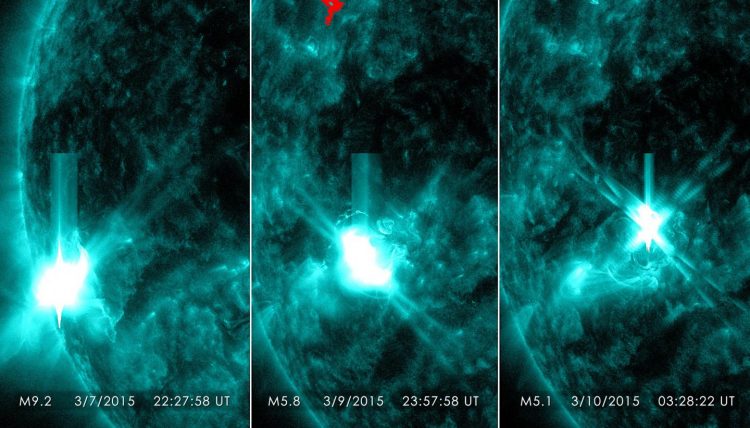SDO captures images of mid-level solar flares

NASA's SDO captured images of three mid-level solar flares March 7-9, 2015, all from the same active region on the surface of the sun. This image of the flares shows a wavelength of EUV light that highlights the intense heat of a solar flare and that is typically colorized in teal. Credit: NASA/SDO
NASA's Solar Dynamics Observatory captured images of the flares, which were classified as an M5.8-class and an M5.1-class, respectively.
These were the second and third flares from the same active region — numbered Active Region 12297 — after it rotated over the left side of the sun on March 7.
Media Contact
All latest news from the category: Physics and Astronomy
This area deals with the fundamental laws and building blocks of nature and how they interact, the properties and the behavior of matter, and research into space and time and their structures.
innovations-report provides in-depth reports and articles on subjects such as astrophysics, laser technologies, nuclear, quantum, particle and solid-state physics, nanotechnologies, planetary research and findings (Mars, Venus) and developments related to the Hubble Telescope.
Newest articles

Sea slugs inspire highly stretchable biomedical sensor
USC Viterbi School of Engineering researcher Hangbo Zhao presents findings on highly stretchable and customizable microneedles for application in fields including neuroscience, tissue engineering, and wearable bioelectronics. The revolution in…

Twisting and binding matter waves with photons in a cavity
Precisely measuring the energy states of individual atoms has been a historical challenge for physicists due to atomic recoil. When an atom interacts with a photon, the atom “recoils” in…

Nanotubes, nanoparticles, and antibodies detect tiny amounts of fentanyl
New sensor is six orders of magnitude more sensitive than the next best thing. A research team at Pitt led by Alexander Star, a chemistry professor in the Kenneth P. Dietrich…





















